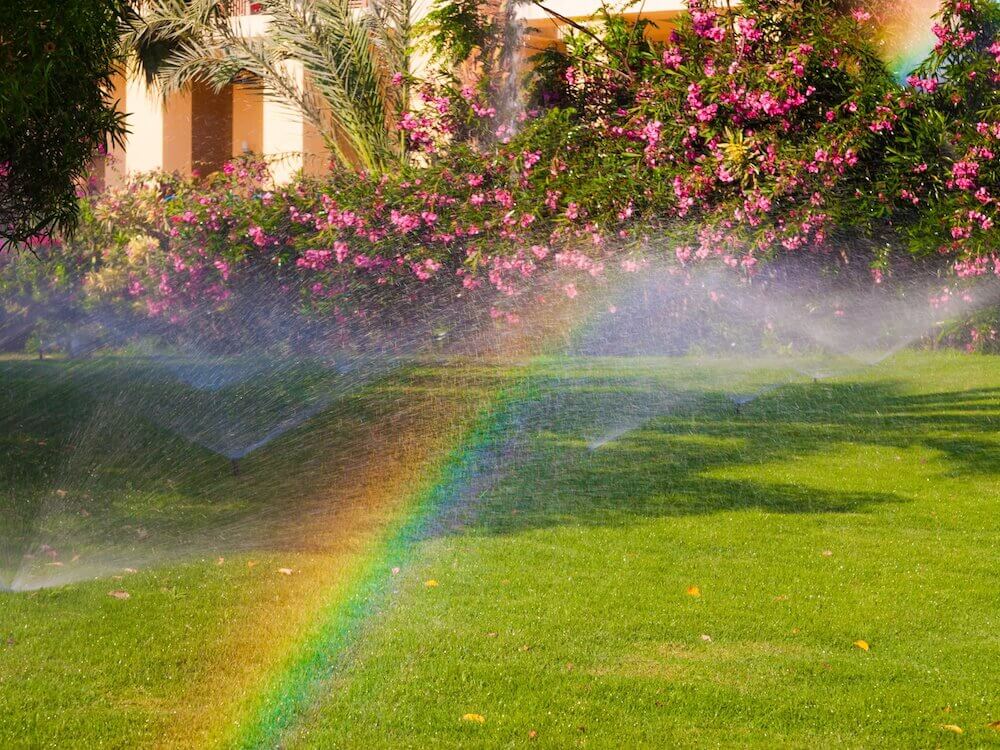
Watering Well: Keeping Your Florida-Friendly Lawn Healthy
It may come as no surprise, but keeping your Florida-Friendly lawn properly irrigated is key to its ability to thrive in our environment. In order to properly maintain your lawn, you have to understand how frequently you must water it, how much, what time of day, how to apply water to your lawn evenly, and even how your turf irrigation affects the rest of the plants that call your lawn “home.”
Watering When Necessary
It’s easy to just set your irrigation timer and forget about it, with no thought of changing it according to the season. But what you need to remember is that there are many factors that influence the frequency in which you water your lawn, including native grass species, amount of rainfall that has already occurred naturally, what type of soil your lawn is home to, shade presence, and of course, season. It’s important to know that when rainfall alone is enough to meet the needs of your lawn and plants, any other controllable irrigation systems should be deactivated until necessary again. This is called watering on an “as-needed” basis.
So what can you to do identify when your grass is in need of some TLC? There are actually several signs that you can look for, including: leaf blades that are folded in half lengthwise (this is their attempt to conserve water); blue-gray tinted grass that has lost its green color; and remains of footprints and/or tire tracks in the grass, long after they’ve come and gone.
Finally, pay attention to any watering restrictions that could possibly be set by the Water Management District, or other form of local government.
Learn the Ins and Outs of Watering Effectively
Despite what you might think, the amount of water you apply should not change with the seasons, only the frequency. The signs of efficient watering include: wetting only the turf grass root zone, unsaturated soil, and no run off. If you feel like your lawn is looking a little sandy, that’s ok! Florida soils are typically this way.
The best time for the lawn to be watered is early in the morning, which makes sense here in Florida because excessive evaporation is liable to take place later on in the day, when the sun is up and shining.
If you are hiring someone to install your irrigation system, it is suggested that you find someone licensed, as this will avoid poor installation, water waste, and lacking coverage. Whether you opt for someone licensed or someone who is not, you should check coverage regularly, as irrigation systems are not flawless. Clogged, damaged, or off-center heads are not abnormal and can cause many issues for your lawn if ignored.
Understand How Proper Methods Affect Your Lawn’s Environment
It wouldn’t be a surprise if you had other elements on your balanced, Florida-Friendly lawn, such as landscape plants. You should understand that all the different elements of your lawn have different irrigation requirements; if you are watering your entire lawn in the same way, it is possible that you are over- or under-watering certain areas. In order to get the job done right, you should be managing the watering schedules of your turf grass and all other lawn vegetation separately, so as to meet the needs of all plant life on your Florida-Friendly lawn.
For example, trees or large shrubs will provide shade for the surrounding grass, which as a result is not experiencing the same direct sunlight as the rest of your lawn. With the right types of trees and the right amount of space, your lawn might receive shade for a large portion of your average day. That said, choosing to grow grass in a shady area will affect the way you irrigate that part of your lawn.
Take into consideration also the conditions of the soil, as that will affect water requirements as well. Predictably, sandy soil does not hold water for a long amount of time, and as a result will dry faster than soil that has a higher clay content. Sandy soil will then, in turn, require more frequent irrigation. Because most soils in urban areas are compacted, watch out for waterlogged conditions and/or standing water.
By following these guidelines and really getting to know what kind of lawn you are dealing with, you’ll be irrigating like a pro in no time.